Tomato plants are heavy feeders and need fertilizers throughout all stages of growth. Instead of buying bags at the store, learn how to make homemade tomato fertilizer recipes.
The great thing about making tomato fertilizer at home is that you make what your plants need based on your soil. It would be best if you had your soil tested before planting to determine what nutrients the soil lacks. After receiving the results, start to add the nutrients your plants need to grow successfully.

Jump to:
Be careful with some of the homemade tomato fertilizer recipes you’ll find online.
I tried several, and they always contain too much nitrogen. Nitrogen is great in the early stages of growth, but tomato plants have different nutrient needs as they grow and change into different stages. Too much nitrogen later in the growing season results in fewer fruits!
Instead of using a recipe, you find online, here is how to make your tomato fertilizer recipe.
What Nutrients Do Tomato Plants Need?
Gardeners have to understand the nutrients that tomato plants need for proper growth. They need different nutrients at different stages throughout their growth cycles. Understanding their needs as the plants grow helps you understand the best time to apply different fertilizers at each stage.

Tomato plants are heavy feeders; they need fertilizers.
All plants need three main nutrients: nitrogen, potassium, and phosphorous. Each nutrient plays a different role in plant growth and development.
Here are what the plants need at each stage of growth.
Nutrients Needed During Transplanting
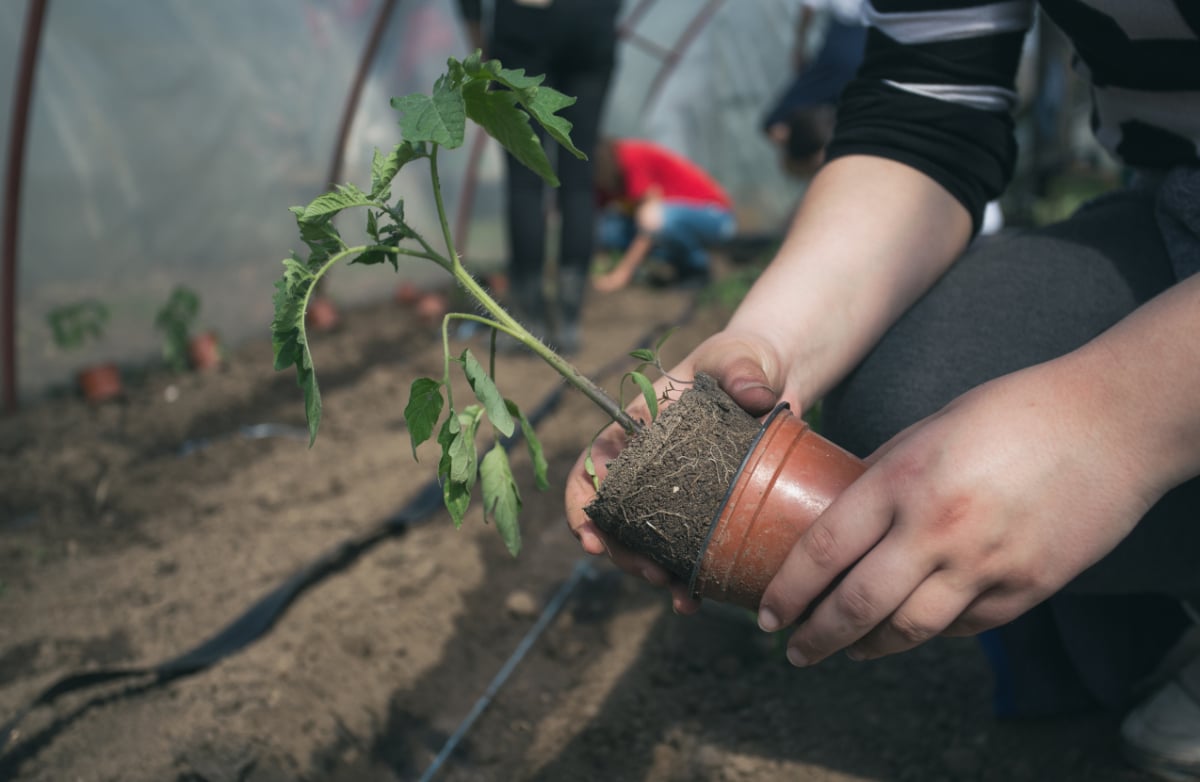
Tomato plants need nitrogen to grow. If you added compost to the soil when you transplanted the seedlings, don’t add any more. Too much nitrogen might accidentally burn or damage your plants.
The only thing you might need to add to your soil is phosphorous. If your compost contained many banana peels and bones, the compost might be sufficient for the first dose of phosphorous needed. Otherwise, consider putting small amounts of bone meal into the holes when you plant your seedlings. Another option is to use fertilizer spikes.
What to Feed Tomatoes During the Growth Phase
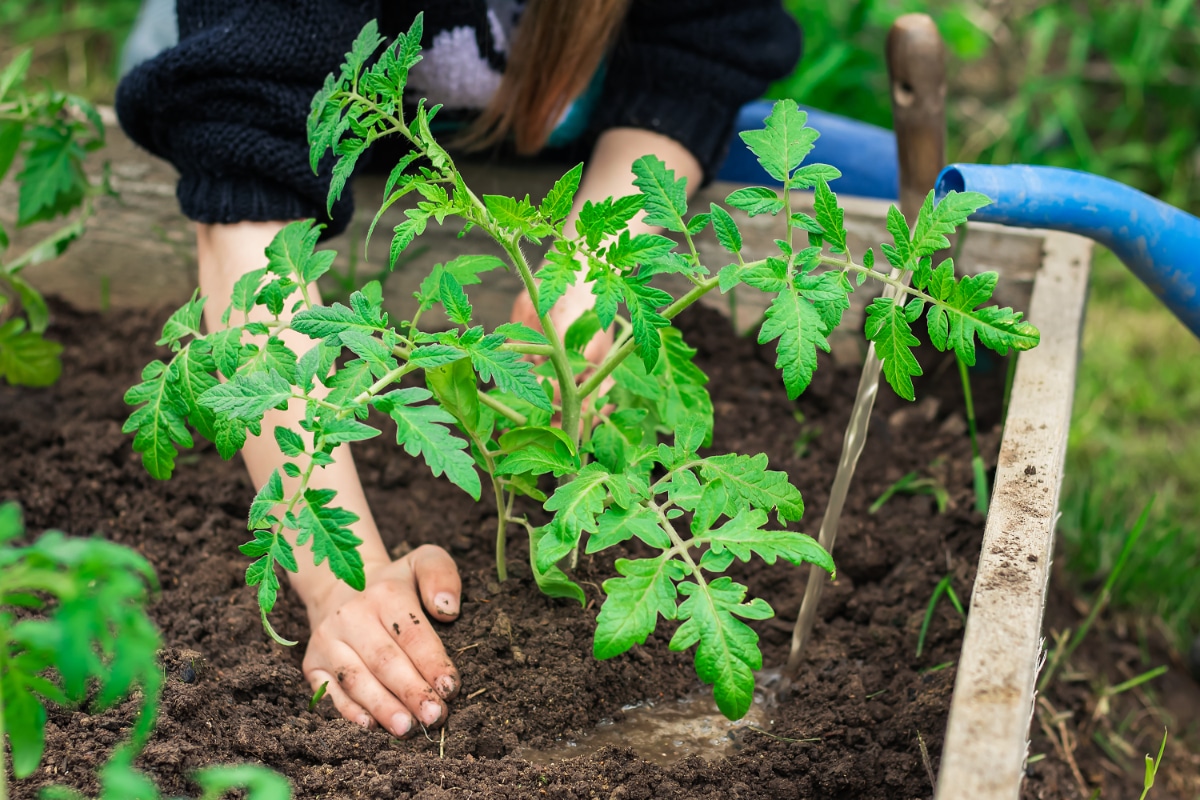
During the growth phase, plants need nitrogen to help form all of the structures, like chlorophyll. Healthy soil and compost should contain all of the nitrogen needed for this phase as well, but if you notice that the leaves at the bottom of your plant turn yellow, you’ll need to add more.
What to Feed Tomatoes When Fruiting
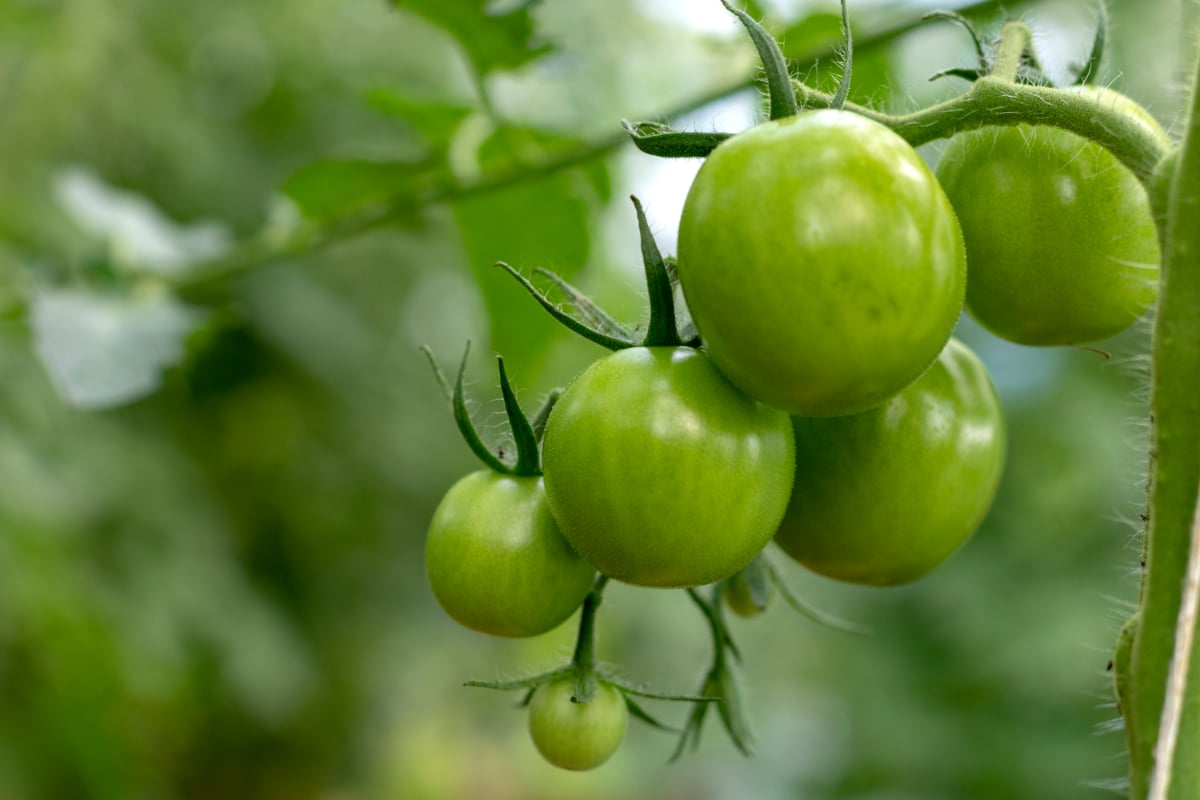
Potassium is needed until the end of the season. Be careful not to add too much nitrogen at this stage because it will lead to an overgrowth of leaves and not enough flowers. A lack of flowers causes a lack of fruit.
Adding potassium at this stage is essential because it promotes healthy, strong growth. The potassium levels must be double that of your nitrogen.
When to Fertilize Tomato Plants
You have to fertilize tomato plants a few times, including while growing tomato seedlings.
First, add fertilizer or compost to the hole where you want to plant your seedling, gently mixing it into the soil. Compost is usually sufficient for most of the tomato plants' growing cycles, but it depends on the quality of your soil and existing soil nutrients.
Shortly after planting, tomatoes need more nutrients, but if you used quality compost, then you shouldn’t need to add more fertilizer at this point. Watch the growth of your plants to help decide if they need any help.
When your plants start to flower and set fruit, it’s time to fertilizer again. Diluted fertilizers work at this stage, but make sure you add plenty of potassium around the base of your soil.
How to Make the Best Homemade Tomato Fertilizer Recipes
Talk to any gardener, and they’ll share their favorite tomato fertilizer recipe. However, you’ll soon realize that everyone has a different opinion about what is best for their plants.
It also depends on what you have available to you. If you raise chickens, using chicken manure in your fertilizer makes sense, but you must compost it before use on your plants. Rabbits also provide nutrients to your plants, but that's only possible if you have access to rabbit manure.
Here’s how to put together the best homemade tomato fertilizer recipe.
Compost is the Base
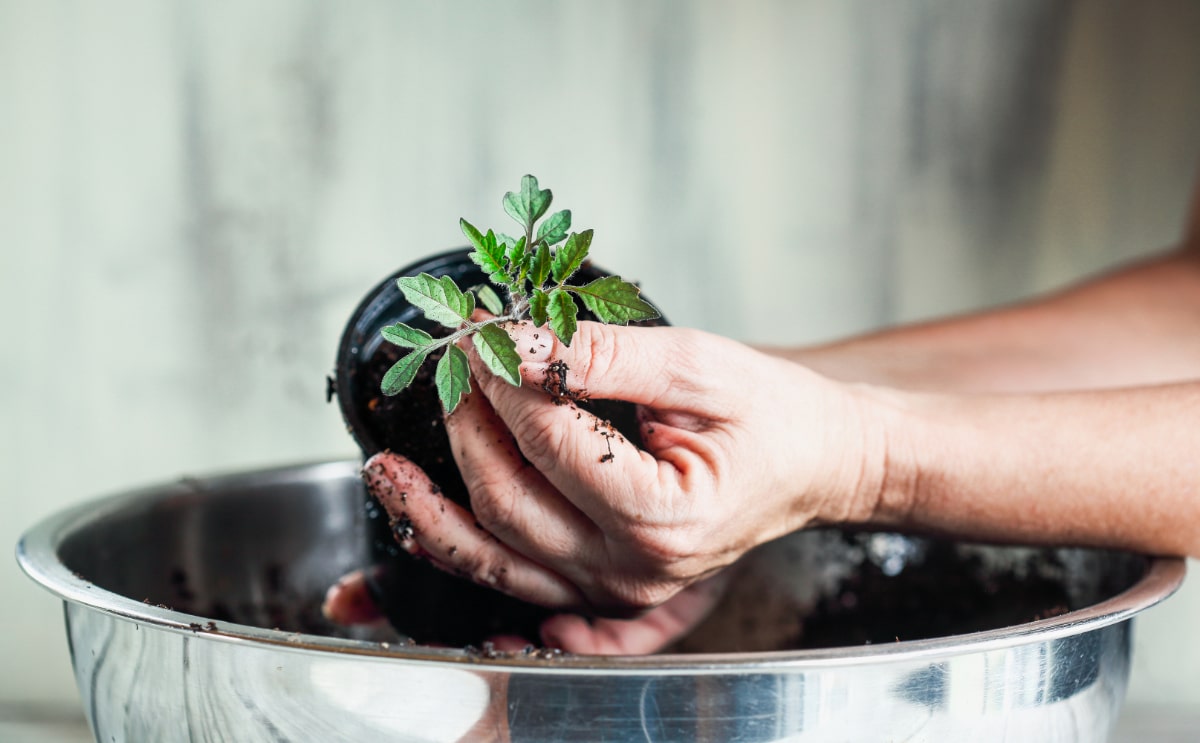
Any good tomato fertilizer recipe uses high-quality compost for the base. Compost is truly the best thing for tomato plants.
Ideally, you’ll have access to homemade compost that you put together from veggie scraps and other materials around your home, but if not, look for organic compost at the store. If you have chickens or rabbits, consider using composted manure instead of typical compost.
Compost should make up half of your tomato fertilizer; it is an all-purpose fertilizer that contains most of the nutrients your plants need. It’s packed full of essential nutrients, along with macronutrients and micronutrients. Compost feeds your plants throughout the entire growing season.
Add The Nutrients Needed
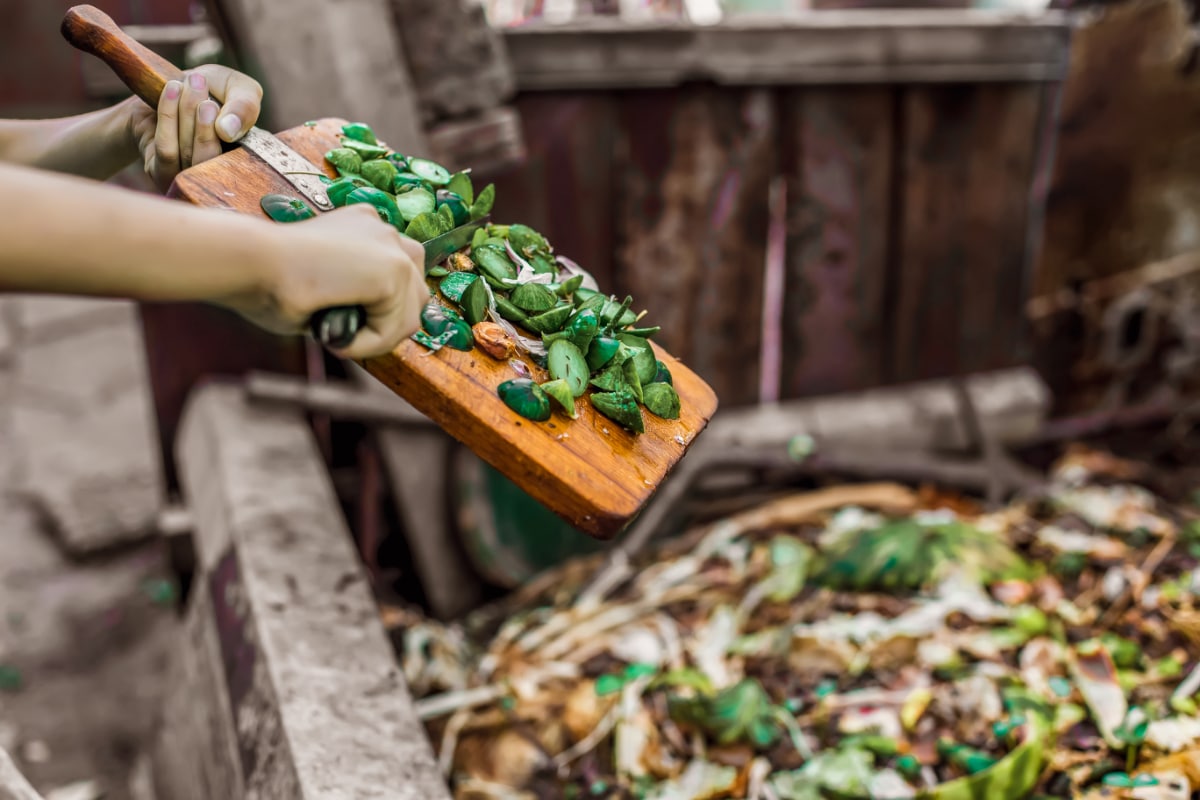
Now it’s time to add different fertilizers to create the best mixture for each growing phase. For example, a cup of wood ashes helps to increase potassium and phosphorous levels.
Let’s look at some of the nutrients you can add to your homemade tomato plant fertilizer.
Wood Ash
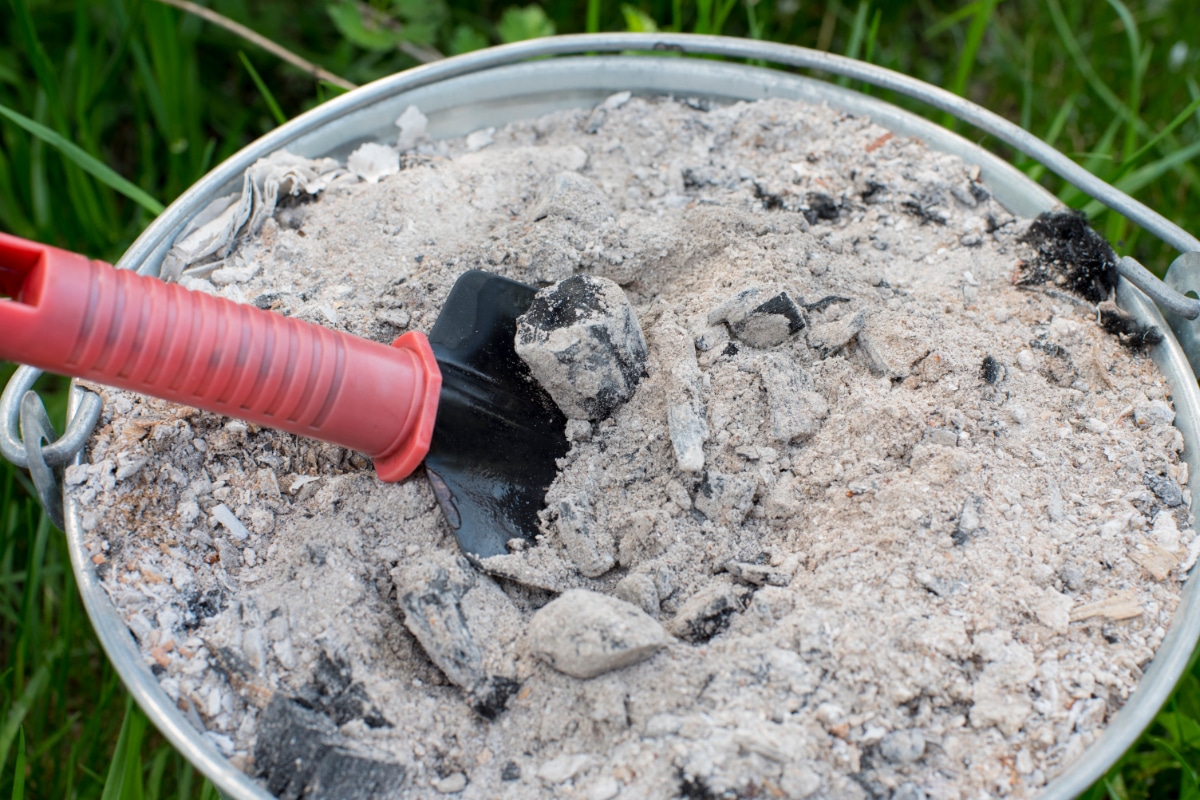
Wood ash that comes from a wood-burning fireplace is a fantastic source of potassium and phosphorous. Be sure not to add too much because wood ash also increases the pH levels in the soil, which can make it too alkaline (depending on your soil's composition).
Kelp Meal

If you don't have access to wood ash, add a few cups of kelp meal to increase potassium levels. Remember, tomato plants need potassium at the last phase of growth during flowering and fruiting.
Cottonseed Meal
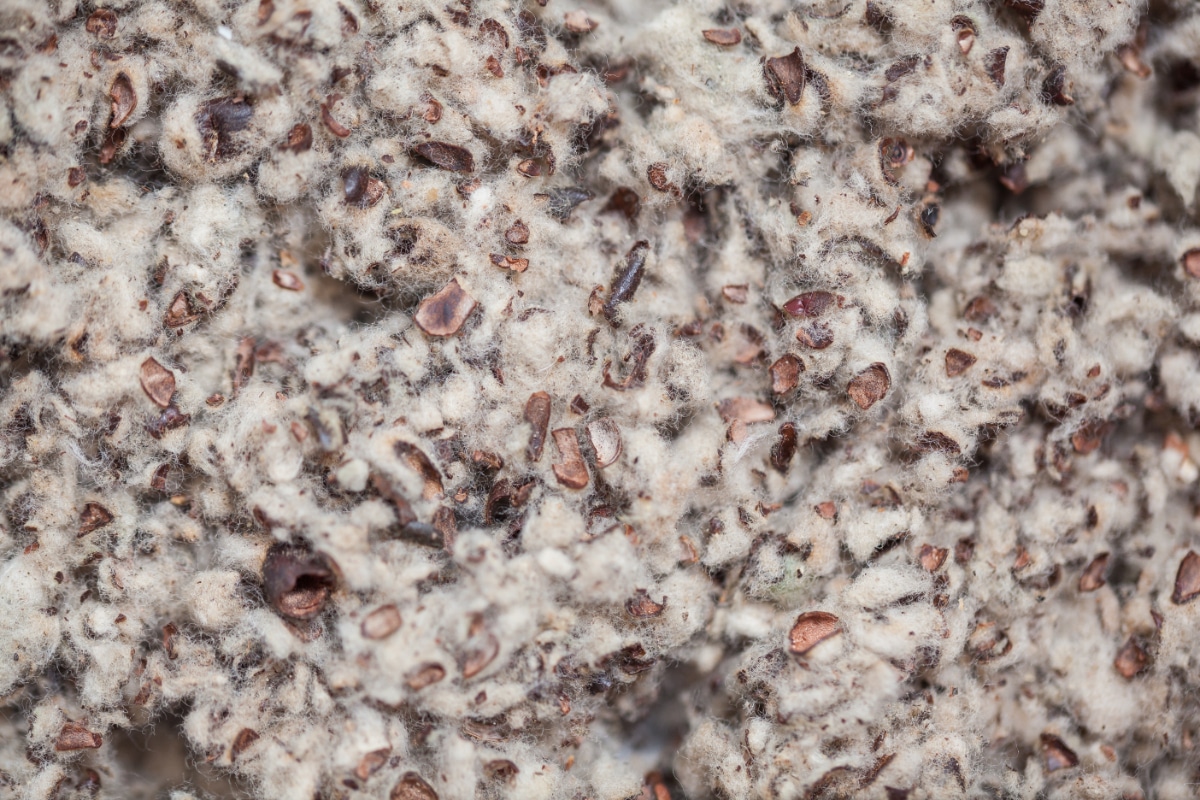
Another good natural tomato fertilizer is a cottonseed meal. It contains nitrogen, potassium, and phosphorus, so it supports all stages of growth. The nutrients in cottonseed meal release slowly, taking about four months to release entirely.
Bone Meal
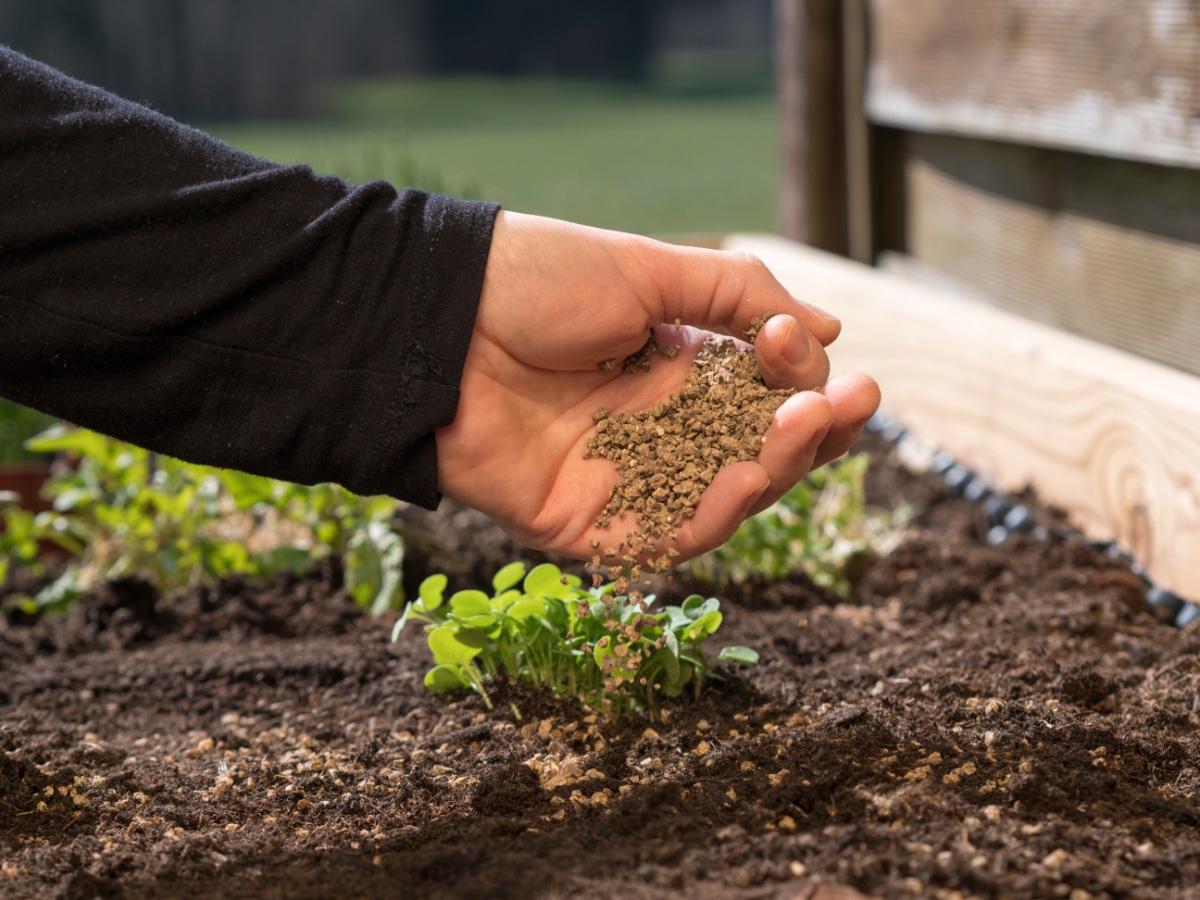
Bone meal is a great source of phosphorous, which plants need during the initial growth stage.
Coffee Grounds or Tea Leaves
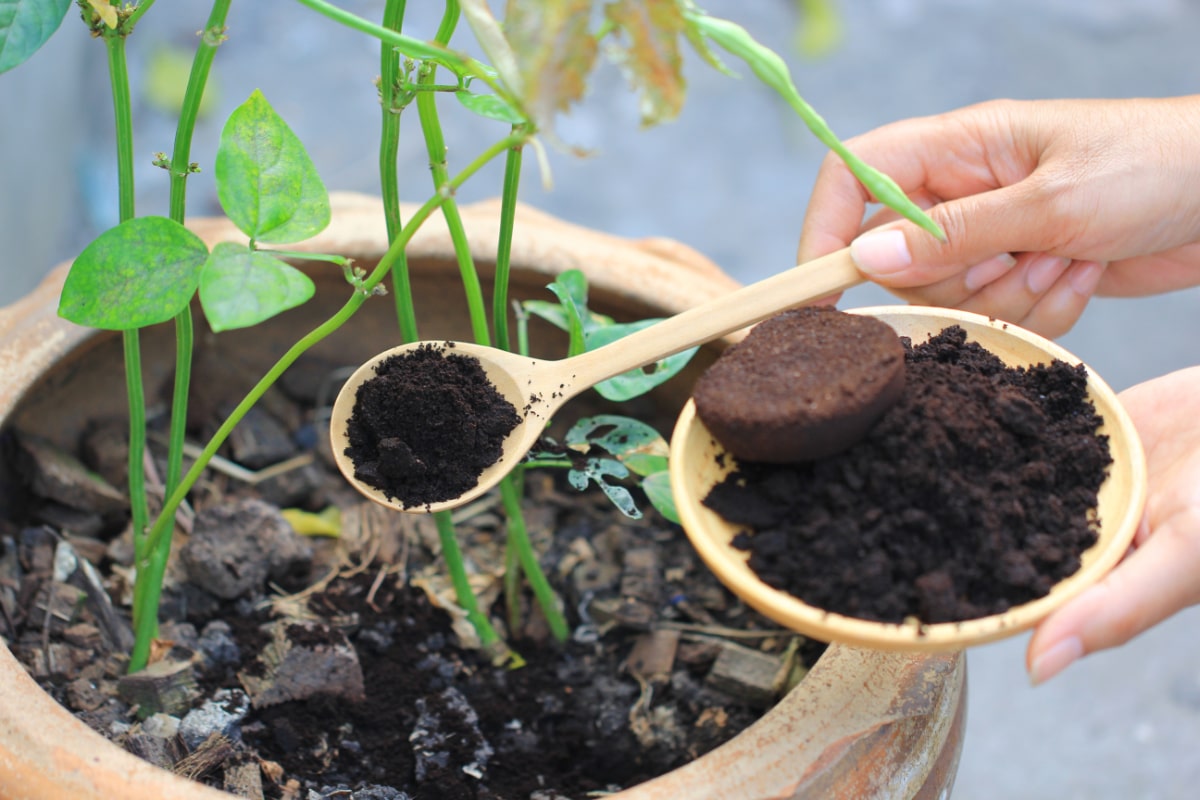
Both coffee grounds and tea leaves contain low levels of nitrogen. Tomato plants need nitrogen at all levels of growth, but less is needed during the last phase.
Alfalfa Pellets
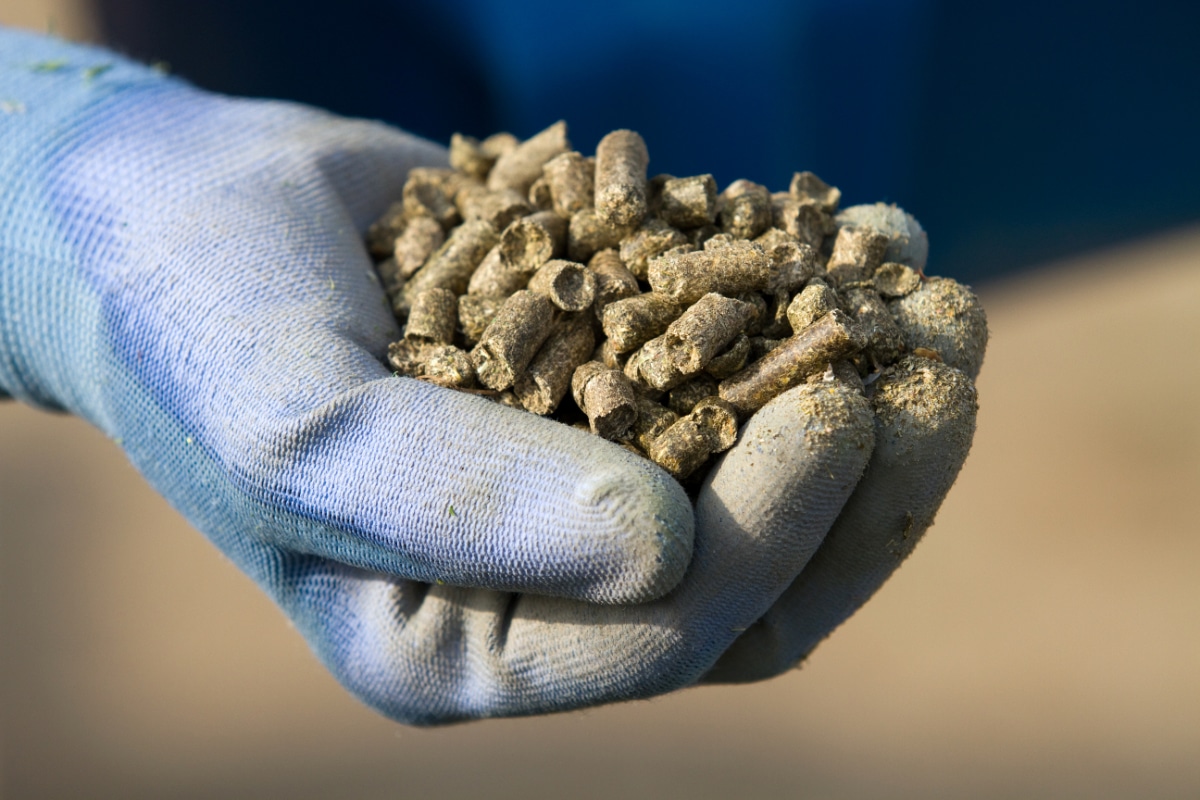
Another way to add nitrogen to your soil in slow amounts is to use alfalfa pellets. They need to be lightly dampened so that they’re close to falling apart before using them in a tomato fertilizer recipe. Make sure you mix the pellets into the recipe fully to help add nitrogen.
Blood Meal
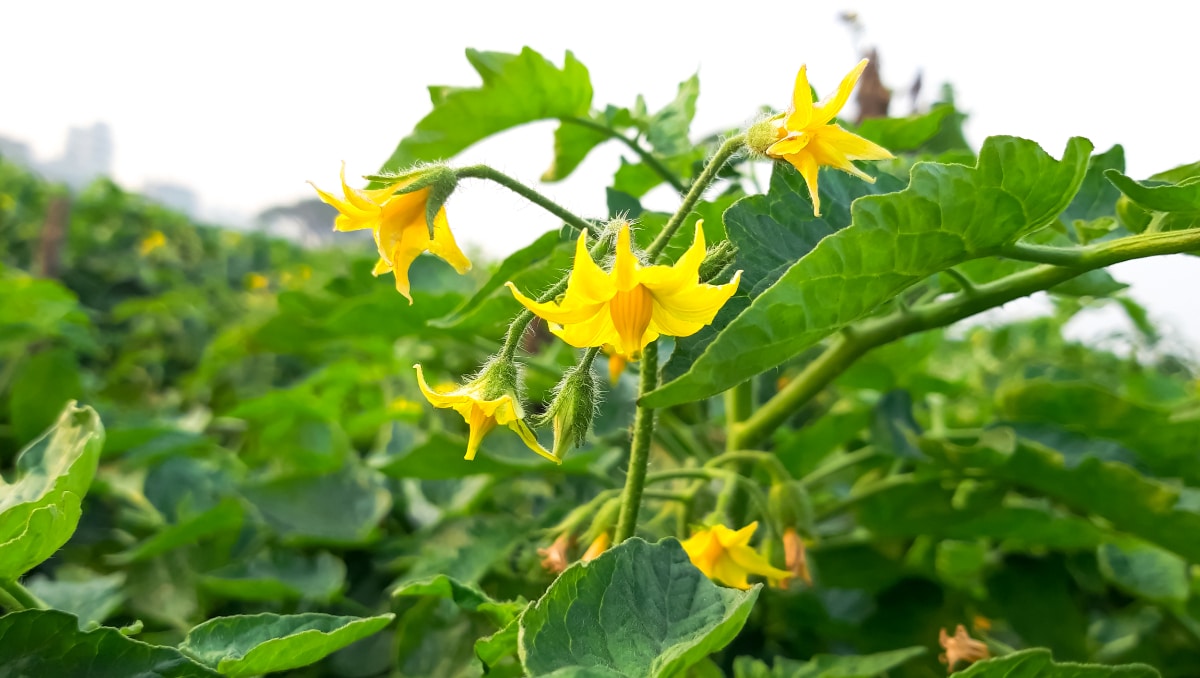
If you think that your soil needs higher doses of nitrogen (determined through proper soil testing), adding a half cup of blood meal will do the job. Blood meal contains the highest amount of nitrogen out of all possible fertilizers, measuring between 9-14%, so only add a small amount.
Pet or Human Hair
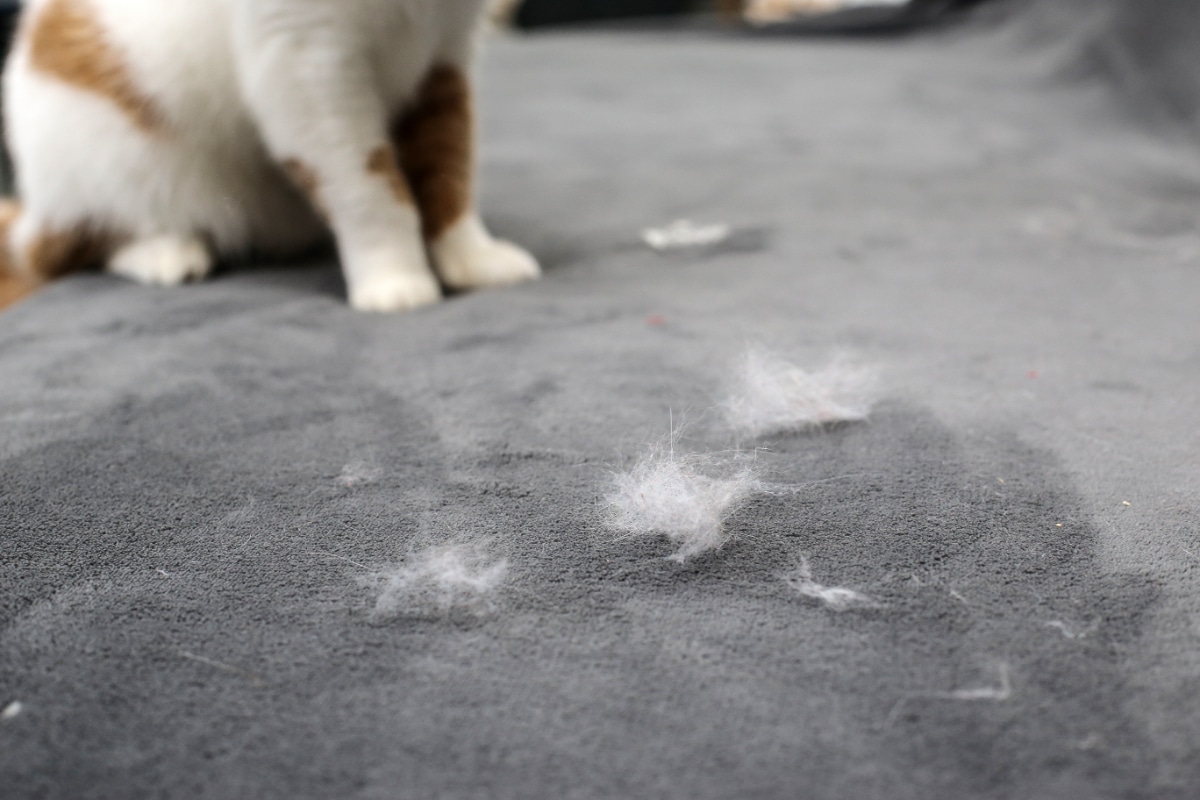
Pet or human hair works great in homemade tomato fertilizers as well. It’s a slow-release nitrogen source along with keratin, a protein that your tomato plants need. Make sure you cut up the hair finely so that it mixes throughout the fertilizer rather than clumping up.
How to Make Liquid Tomato Fertilizer
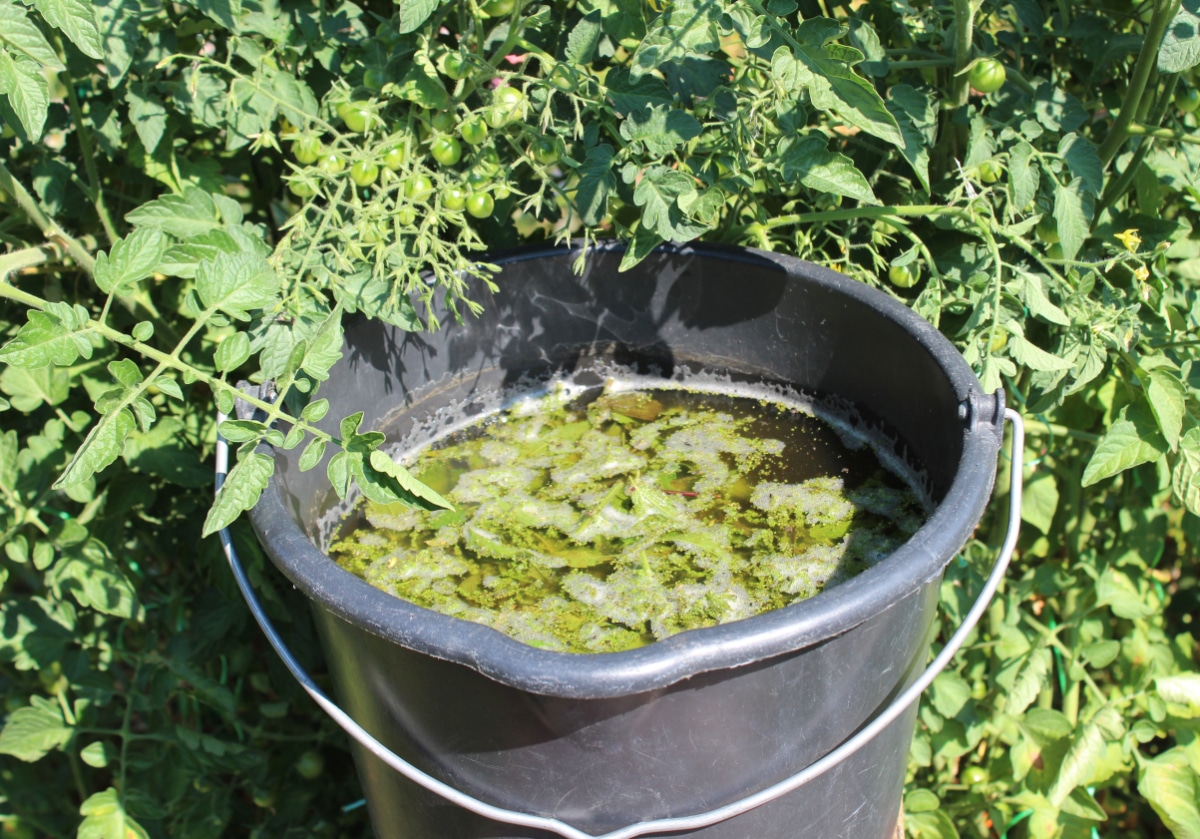
Some gardeners prefer to use liquid fertilizers, often called fertilizer tea. It takes time, but it’s worth it. Here’s what you need to do.
Take one pound of the tomato fertilizer you created and put it in a separate five-gallon bucket. Now, add a gallon and a half of water to the bucket and stir together well. Stir a few times per day to keep everything well mixed. Liquid fertilizers need to steep for a minimum of five days before use.
After five days, drain off the liquid and use this fertilizer immediately in your garden. Don't toss out what you strained out; those solids should be mixed around your plants or added to your compost pile. Never waste nutrients.
A Few Questions About What Helps Tomatoes Grow
One common problem that gardeners run into is bad advice about the best homemade tomato fertilizer and what helps tomatoes grow.
Are Used Coffee Grounds Good for Tomato Plants?

Coffee grounds are good for tomato plants. They provide a necessary boost in nitrogen that plants need for foliage growth but used coffee grounds only contain small amounts of nitrogen. It can’t be your sole source of nitrogen for your plants.
What Does Epsom Salt Do For Tomato Plants?
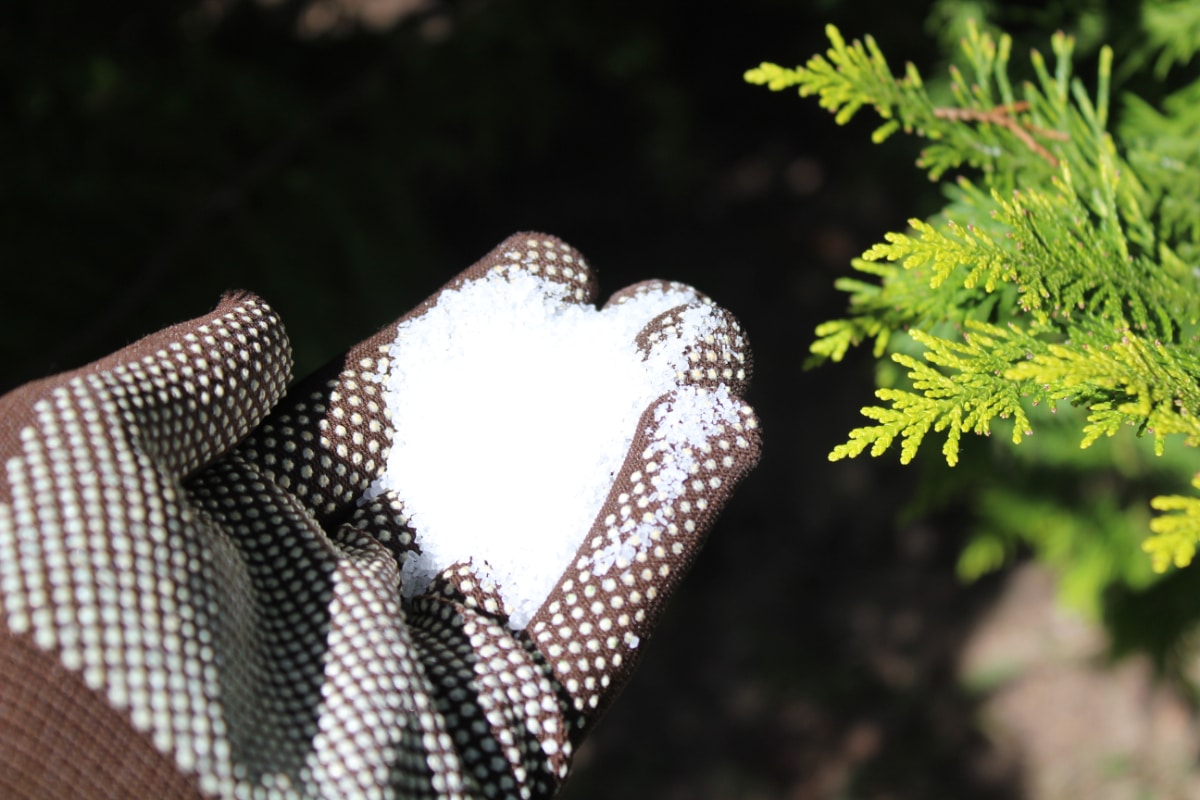
Adding Epsom salt to the soil around your tomato plants increases the magnesium, which plants need for growth. Using Epsom salt during the tomato growth cycle increases the yield and aids cell development and photosynthesis.
Are Banana Peels Good for Tomato Plants?
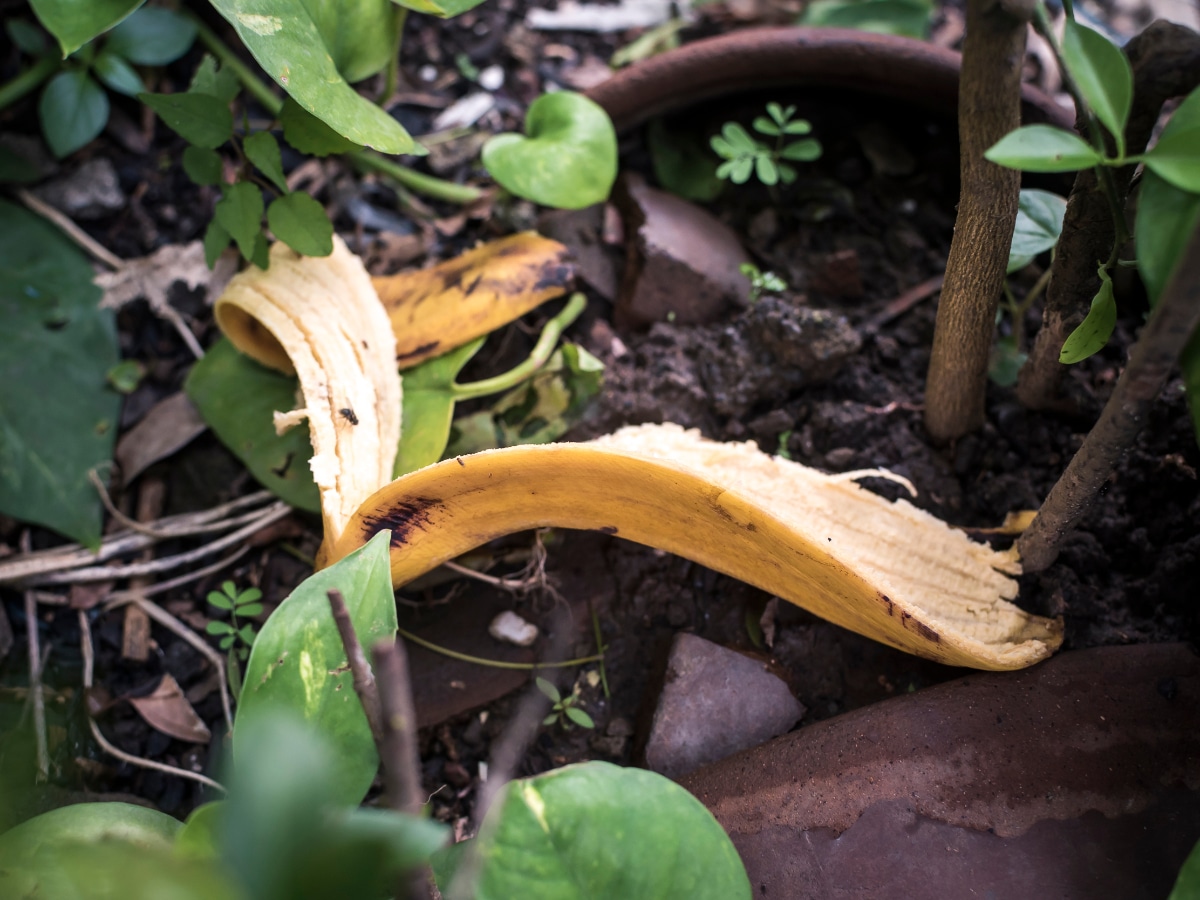
Yes, banana peels are good fertilizers for tomato plants because they're an excellent potassium source, a nutrient that plants need for growth. Banana peels also contain calcium, which prevents blossom end rot in tomatoes.
What is the Best Tomato Fertilizer Recipe?
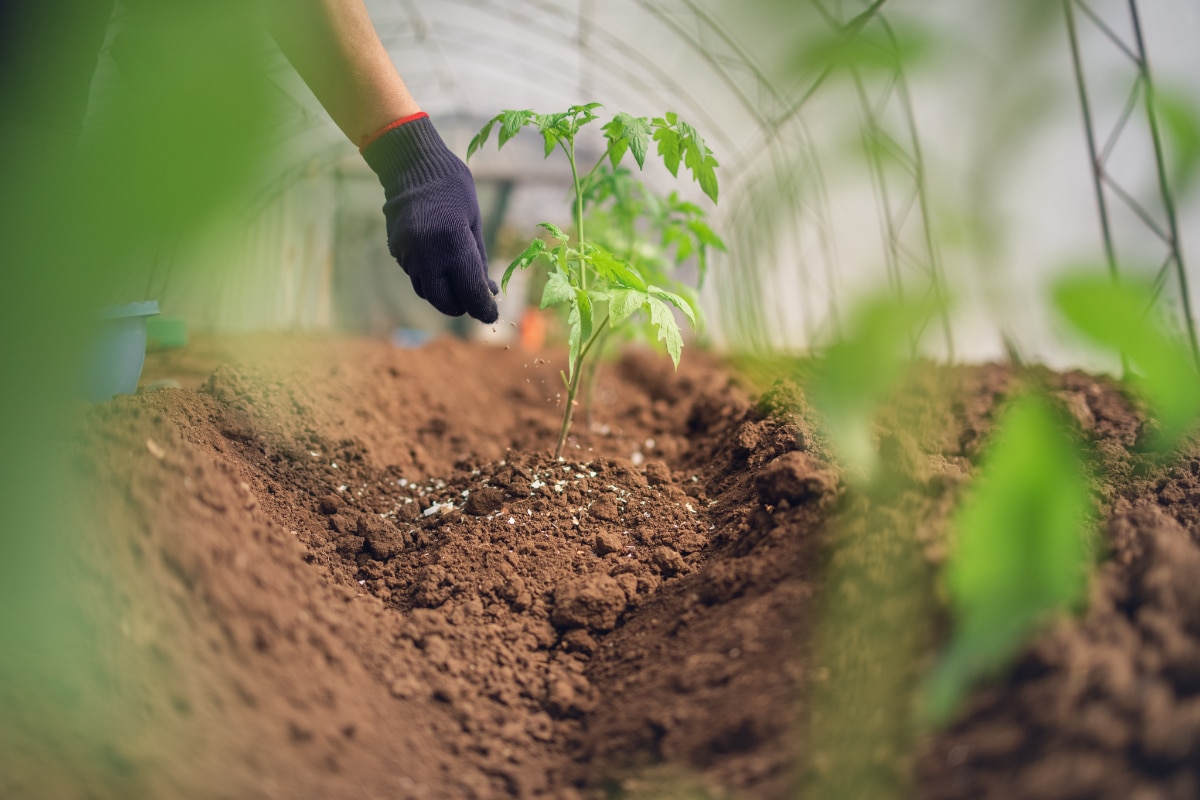
The best tomato fertilizer recipe varies based on what nutrients your soil lacks and needs, along with what stage of growth your plants are in right now. Making homemade tomato fertilizers is easy; start with a compost base and add other fertilizers to increase the nutrients that your plants need.

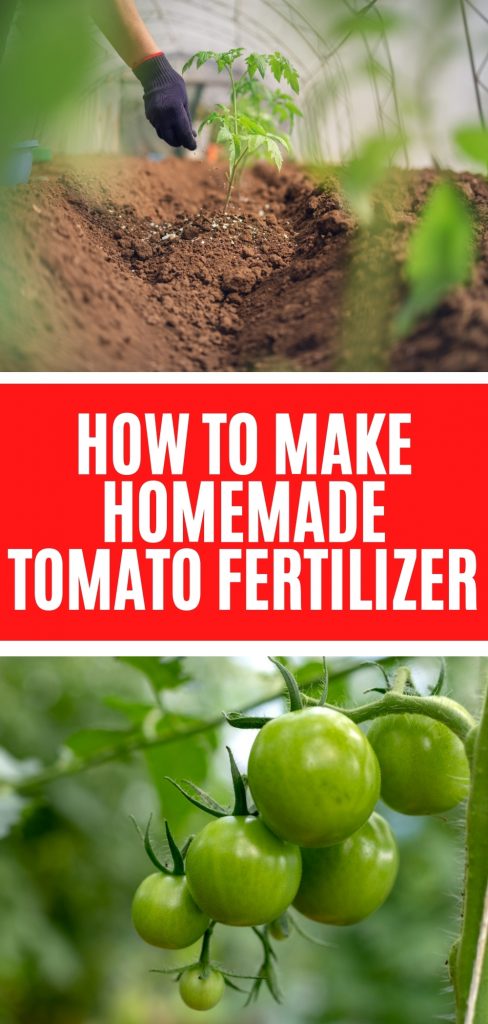
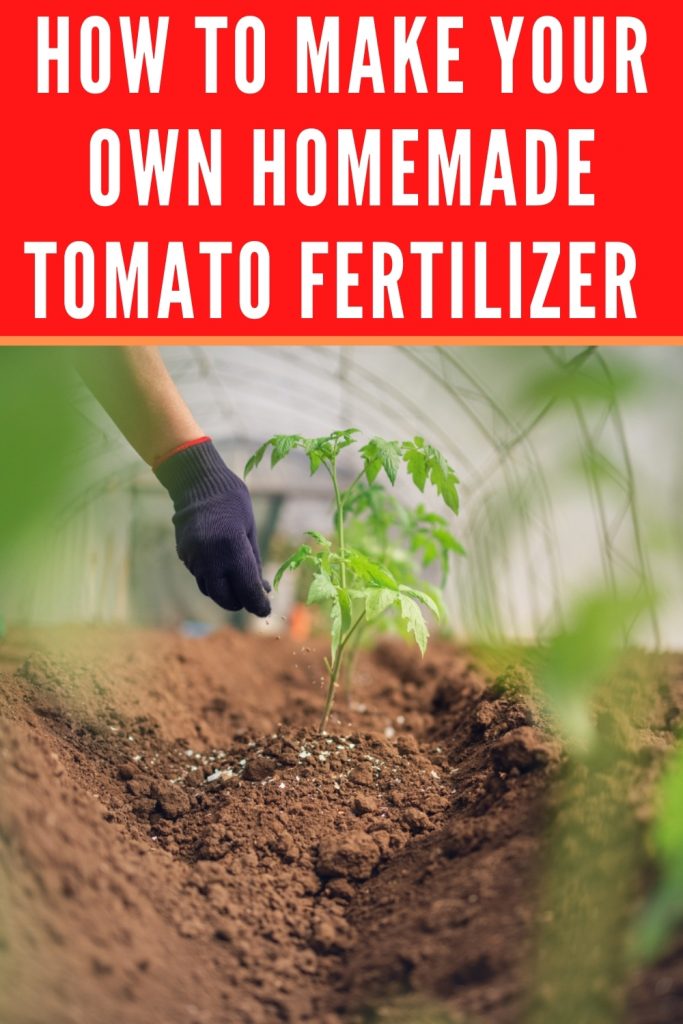
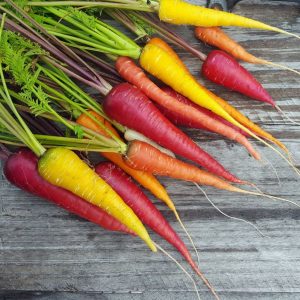
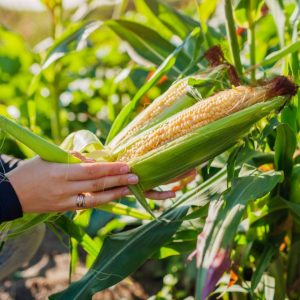
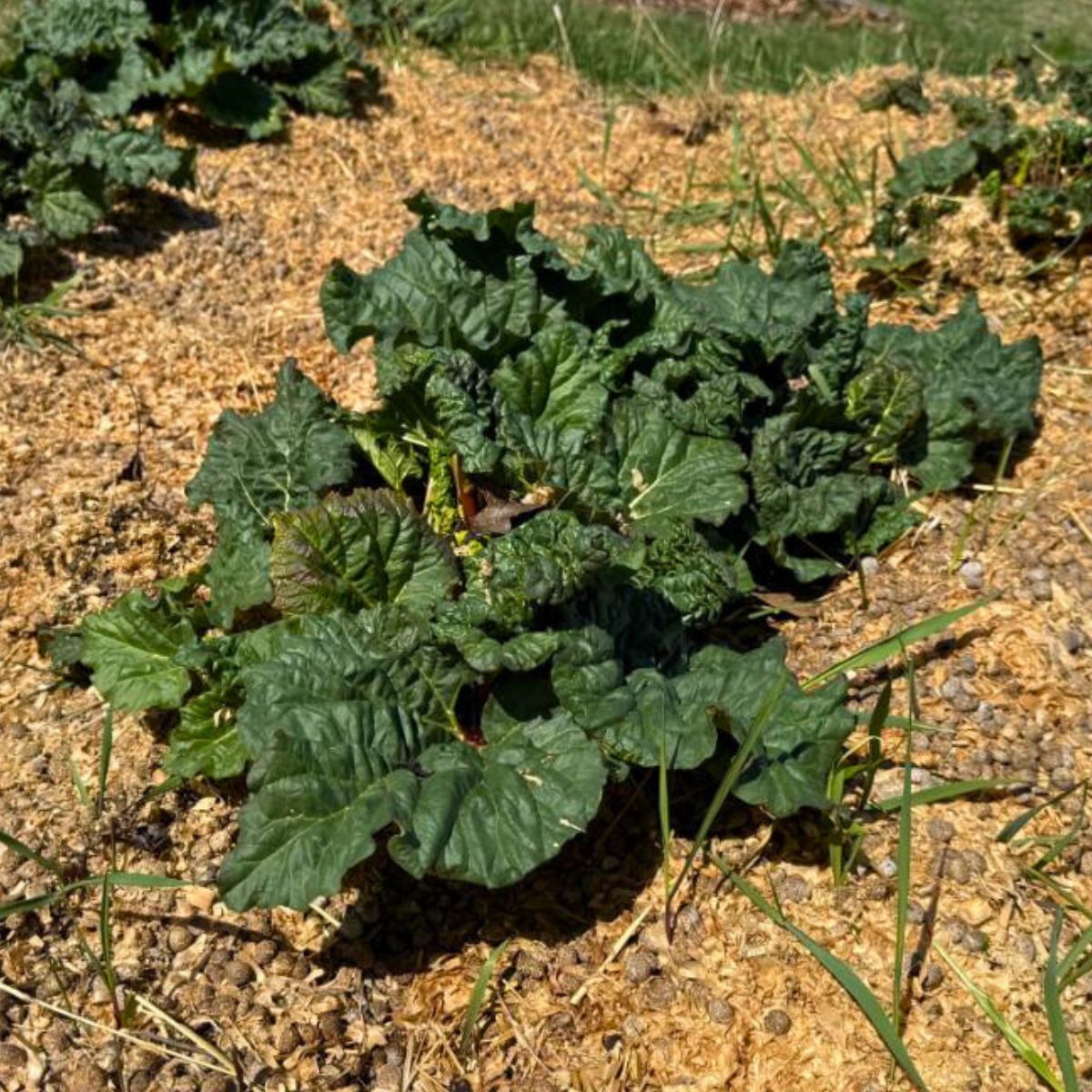
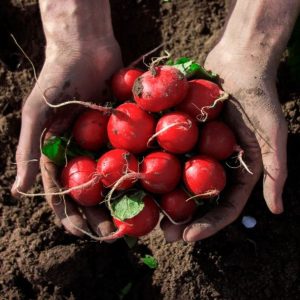
Solomon
Epsom salt is magnesium sulphate. Can I use magnesium nitrate in place of Epsom?
[email protected]
Yes but it's more potent you can use less.
Hassan Dalhat
Gardening.org is really educating. Thanks for your contribution to gardening.
Max
This was helpful
bill stacey
I thought wood ashes were alkaline.
Mary Ward
Yes, they will increase soil pH. Thanks for catching that typo. It's been corrected.
Katharine
You all just answered several questions that I've
Been struggling with. Thank You so much!
Mary Ward
So glad to hear it! We strive to find topics that are helpful and informative so you don't have to wait for an answer!
Hannah
Is there a way you can list the recipe altogether?